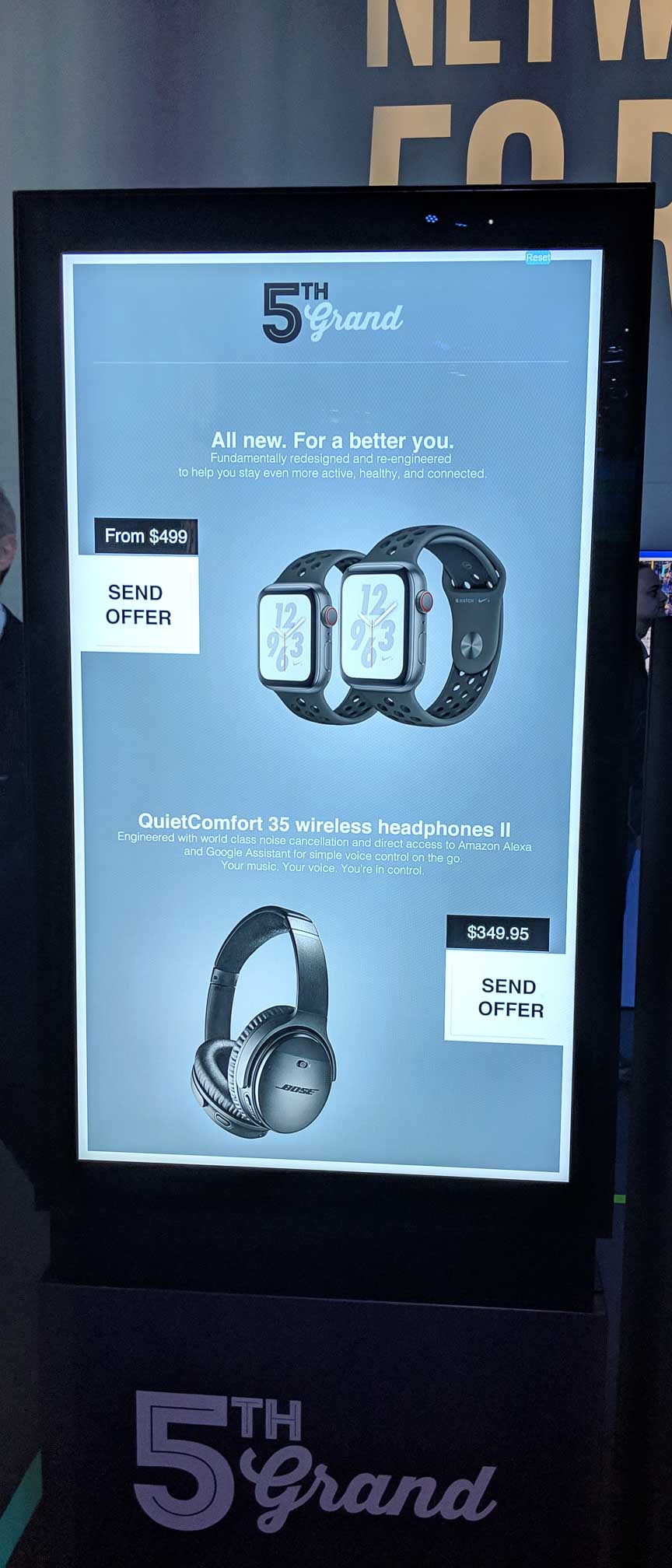Intel Corp. is at the forefront of 5G technology development. Its key drivers are processors that work in base stations and servers that process data sent from 5G networks. At Mobile World Congress 2019 in Barcelona, Intel illustrated its vision for a connected 5G world through a few nifty exhibits.
At the entrance, Intel greeted its guests with an immersive VR experience. One of the key benefits of 5G is its ultra-low latency, which enables lag-free multiplayer gaming. In addition, 5G’s high data rate can fulfill VR’s stringent high-resolution graphics.
Not only is latency-free gaming possible with 5G, it can also untether VR headsets from bulky PCs. In the future, standalone VR headsets can send data to be processed in the cloud and immediately receive the results. They should also be able to instantaneously respond to the user’s head movements. Since they’ll be without cables and require less local processing, expect VR headsets to carry longer battery life and be much lighter.
Just behind the VR stand was the virtual safety zone demo. This booth played into the world of AR, or augmented reality. As reliable as sensors are, setting them up for individual zones requires physical intervention and planning. Virtual safety zone allows the operator to virtually define restricted areas through video feeds and have the program issue alerts when an object enters its premise. Using Intel’s processors and accelerators, the program can also perform object recognition through machine learning.
Parallel to the VR stand was a digitally-managed convenience store, completely without human employees. A customer only needs to scan a mobile payment app at the gate, pick up the items he needs at the store, then exit. The tiny storefront used high-resolution cameras mounted on a ceiling rack to keep track of which items have been removed from the shelf. This store format saves space, lowers cost of ownership, and is much faster than a conventional checkout line.
Next to the virtual safety zone was the smart signage booth. This demo highlighted how 5G and machine learning could bring tangible benefits to personalized advertising. The system featured two components. The first step was facial recognition, where the system identified the attendees based on their gender and approximate age. The data was then sent to the cloud to be processed, once again relying on 5G’s low latency for instant response. The system then displayed the targeted ads on a digital billboard.
Many use cases across these demos relate to being able to process data gathered from high-resolution videos and receive instantaneous responses. Offloading intensive processing to the cloud means devices can deliver more content without requiring a powerful processor. In addition to enterprise applications highlighted in the demos above, remote-processing could also help enrich smart home and IoT capabilities all the while reducing their size and power consumption.








